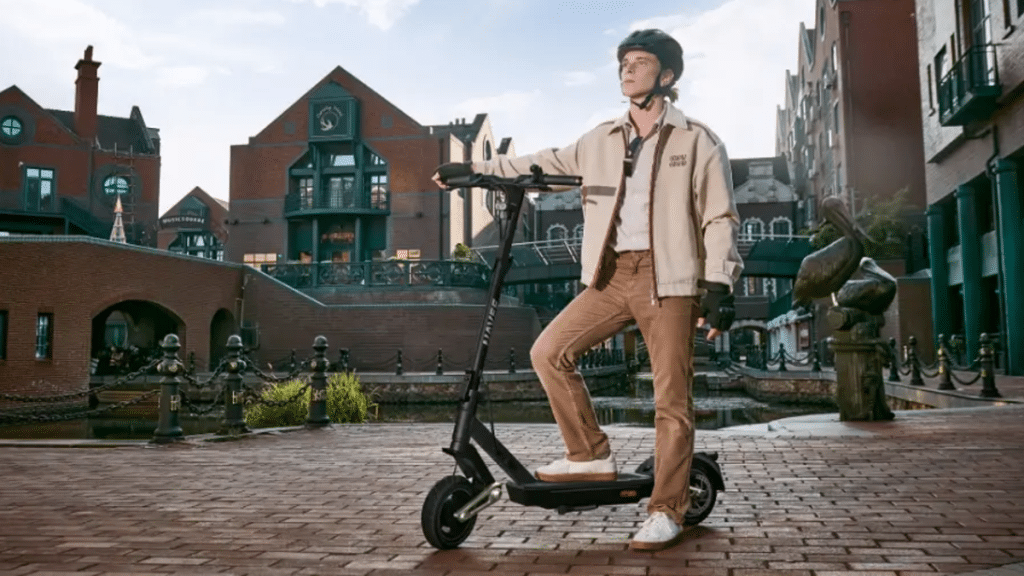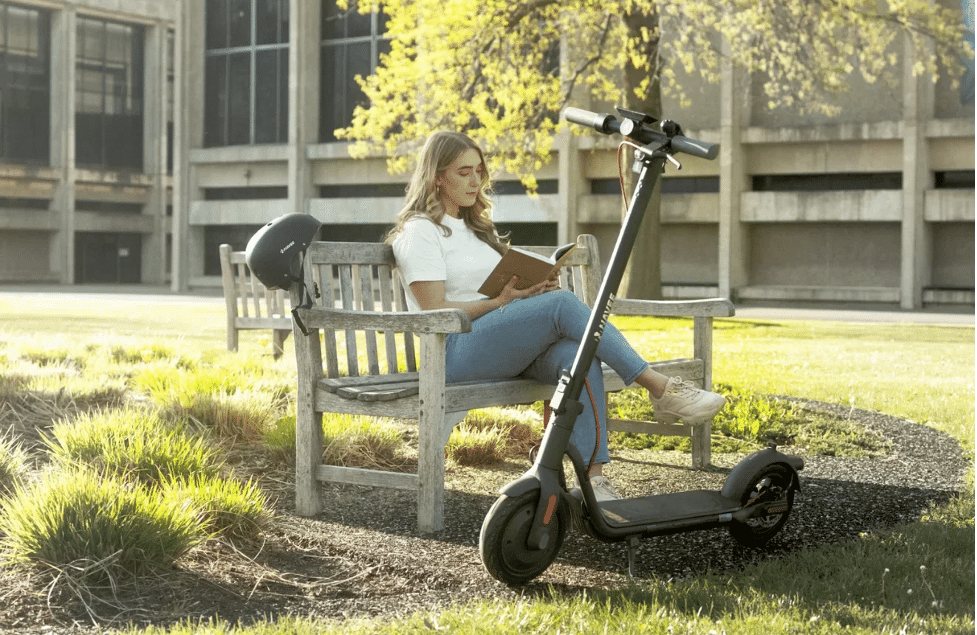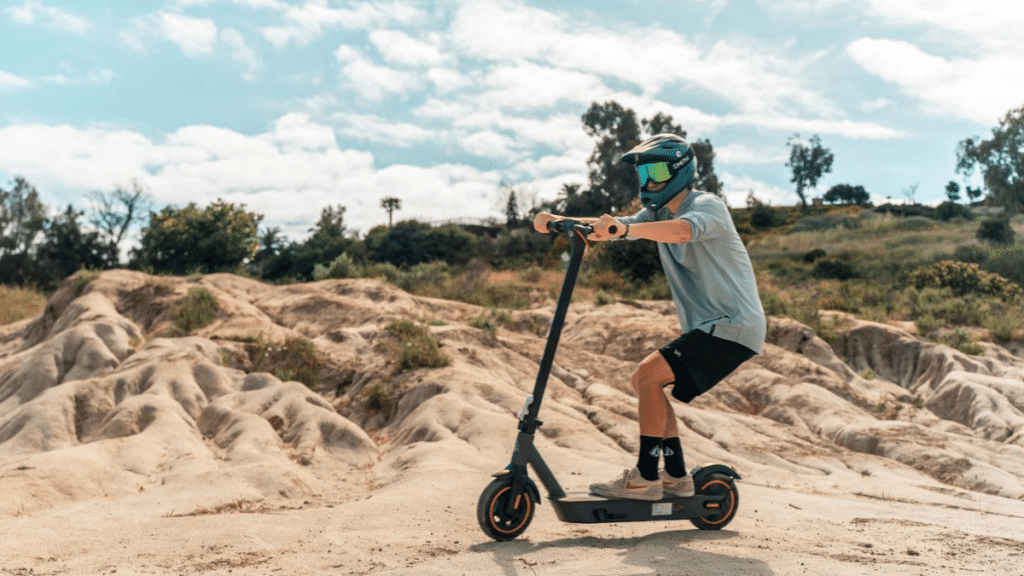Electric scooters typically have top speeds ranging from 15 to 30 mph (24 to 48 km/h), with some high-performance models reaching over 60 mph (97 km/h). Understanding these speed limits helps you choose the right scooter based on your needs, whether for quick city commutes or high-speed adventures.
Keep reading to learn how speed is affected by factors like terrain, rider weight, and more.
What “Top Speed” Really Means
Top speed refers to the maximum velocity an electric scooter can achieve under controlled, ideal conditions—calm weather, flat terrain, and minimal load. While it indicates peak power capability, typical riding speeds are set lower to prioritize safety and prolong battery life.
Key Factors That Affect Speed
Rider Weight and Load
Rider weight and the added load, such as a backpack or extra cargo, significantly affect a scooter’s performance. A heavier rider or additional load reduces acceleration and top speed, as the motor has to work harder to move the extra weight.
Battery Charge Level and Health
A full, healthy battery is essential for maintaining top speed and range. If the battery is low or worn out, the scooter will not perform at its best. To extend battery life, regularly charge it to around 80% and avoid letting it deplete fully.
Terrain, Inclines, and Surface Quality
The type of terrain ridden on has a major impact on speed. Hills, rough patches, and uneven surfaces slow the scooter down because the motor works harder to maintain speed. Riding on flat, smooth roads helps maximize speed and efficiency.
Tire Type and Suspension Setup
The type of tires and the suspension system also influence speed and comfort. Pneumatic (air-filled) tires offer better grip and smoother rides at high speeds, while solid tires tend to reduce speed and can feel bumpier. Proper suspension setup improves stability, especially at faster speeds.

Common Pain Points and Practical Solutions
Balancing Speed and Safety
To ride safely at higher speeds, always wear the right protective gear, such as a helmet, knee pads, and elbow pads. Start at lower speeds and gradually build up to allow the rider to get comfortable with braking distances. Regular brake maintenance ensures they respond well when needed.
Maximizing Range When Riding Fast
To make sure the scooter lasts longer on a single charge, plan routes that are energy-efficient. Alternate between higher and moderate speeds to prevent the battery from draining too quickly. Also, closing unneeded features, like Bluetooth or lights, helps conserve power.
Navigating Legal Speed Limits
Before heading out, check local regulations on bike lanes and sidewalks to ensure the scooter’s speed is within legal limits. Consider using a speed limiter or geo-fencing apps to help regulate speed. In certain areas, it’s best to stick to lower modes to stay compliant.
Improving Comfort at Higher Speeds
Riding at high speeds can be uncomfortable, but upgrading to air-filled tires can absorb bumps and provide a smoother ride. Installing shock-absorbent foot mats and handlebar grips adds comfort. Adjusting posture also helps reduce wind fatigue and makes the ride more enjoyable.
Actionable Tips to Optimize Performance
Regular Maintenance Routine
To keep the scooter in top shape, check the bolts, headset tightness, and brake pads every month. This simple routine ensures that everything is secure and functioning properly, preventing unexpected issues while riding and improving safety.
Battery Care Best Practices
Store the battery at 40–60% charge if the scooter won’t be used for a few days. This helps maintain battery health. Also, avoid letting the charge drop below 10%, as deep discharges can reduce battery lifespan and performance over time.
Proper Tire Inflation & Suspension Tuning
Ensure the tires are inflated to the manufacturer’s recommended PSI to avoid sluggish performance and potential damage. For a smoother ride, fine-tune the suspension preload based on rider weight to keep the scooter stable and comfortable, especially at higher speeds.
Firmware Updates and Speed Limit Settings
Keep the scooter’s firmware updated to ensure optimal performance and to fix any bugs that could affect speed or handling. Adjust the electronic speed limiter when needed to match local regulations or to tailor the scooter’s performance to personal preferences.
Real-World Speed Testing and Comparisons
How to Conduct Your Own Speed Test Safely
To get an accurate speed reading, use a GPS-enabled app or a dedicated speedometer. Pick a flat, open stretch of road that is free of traffic and distractions. This ensures you can focus on the scooter’s performance and record the top speed under consistent, safe conditions.
Recommended Models for Different Speed Needs
For beginners, look for scooters that offer a top speed of up to 15 mph. These are easy to control and perfect for short, city commutes. For mid-range commuters, scooters with speeds between 15–20 mph strike a balance between speed and practicality. Performance enthusiasts who crave faster speeds should opt for models like the Navee electric scooter, which offers impressive top speeds and advanced features for longer, high-speed rides.
For more details on high-quality electric scooters, check out the Navee electric scooter, which offers a variety of models tailored to different riding needs.

Frequently Asked Questions
How Fast Is Safe for Urban Commutes?
For urban commutes, a safe speed is usually between 15–20 mph. This range allows for better control while navigating through busy streets, pedestrians, and traffic signals. It’s fast enough to keep up with city flow but slow enough to react safely to sudden changes.
Will Riding at Top Speed Damage My Scooter?
Riding at top speed occasionally won’t harm the scooter, but doing it regularly can cause increased wear and tear on the motor, brakes, and battery. To prevent damage, it’s best to alternate between moderate speeds and high-speed bursts, giving the scooter time to cool down.
How Much Range Do I Lose at Higher Speeds?
At higher speeds, the scooter consumes more energy, reducing its range. Generally, every 5 mph increase can lead to a noticeable drop in distance per charge. For example, riding at 20 mph will deplete the battery much faster than cruising at 15 mph, so plan accordingly.
Do I Need a License to Ride at 20+ MPH?
Whether you need a license depends on local laws. In many places, riding a scooter that exceeds 20 mph may require a special license or registration. It’s always best to check local regulations before hitting the road, especially if you’re riding faster than the typical city speed limit.
In Conclusion
Electric scooters typically reach speeds between 15 and 30 mph, with some high-performance models going even faster. The speed you choose depends on your needs—whether it’s for city commuting or high-speed riding. Keep in mind that factors like rider weight, battery health, terrain, and legal regulations all affect performance. By understanding these elements and following best practices for safety and maintenance, you can enjoy a safe, efficient ride that meets your speed requirements.
